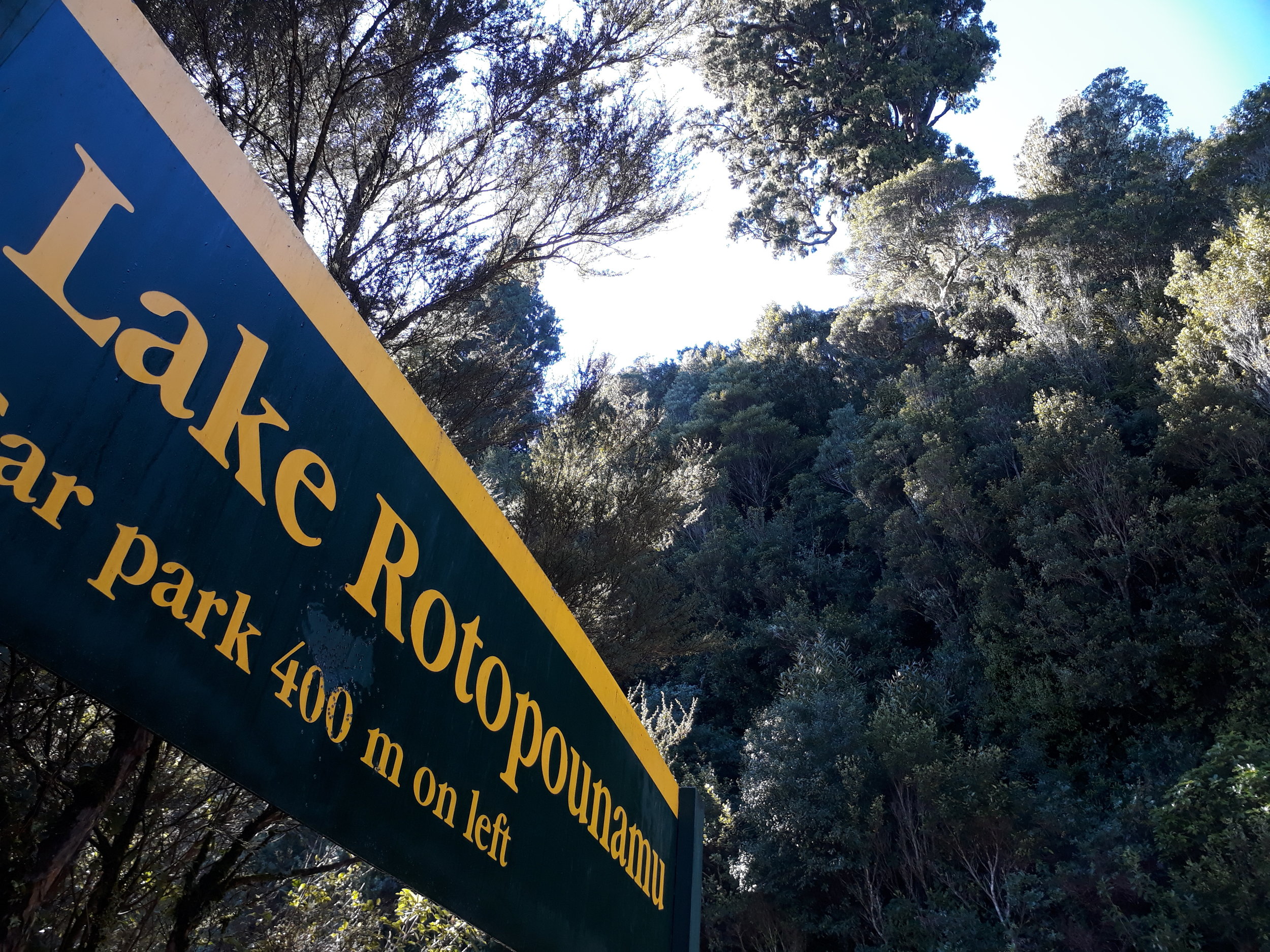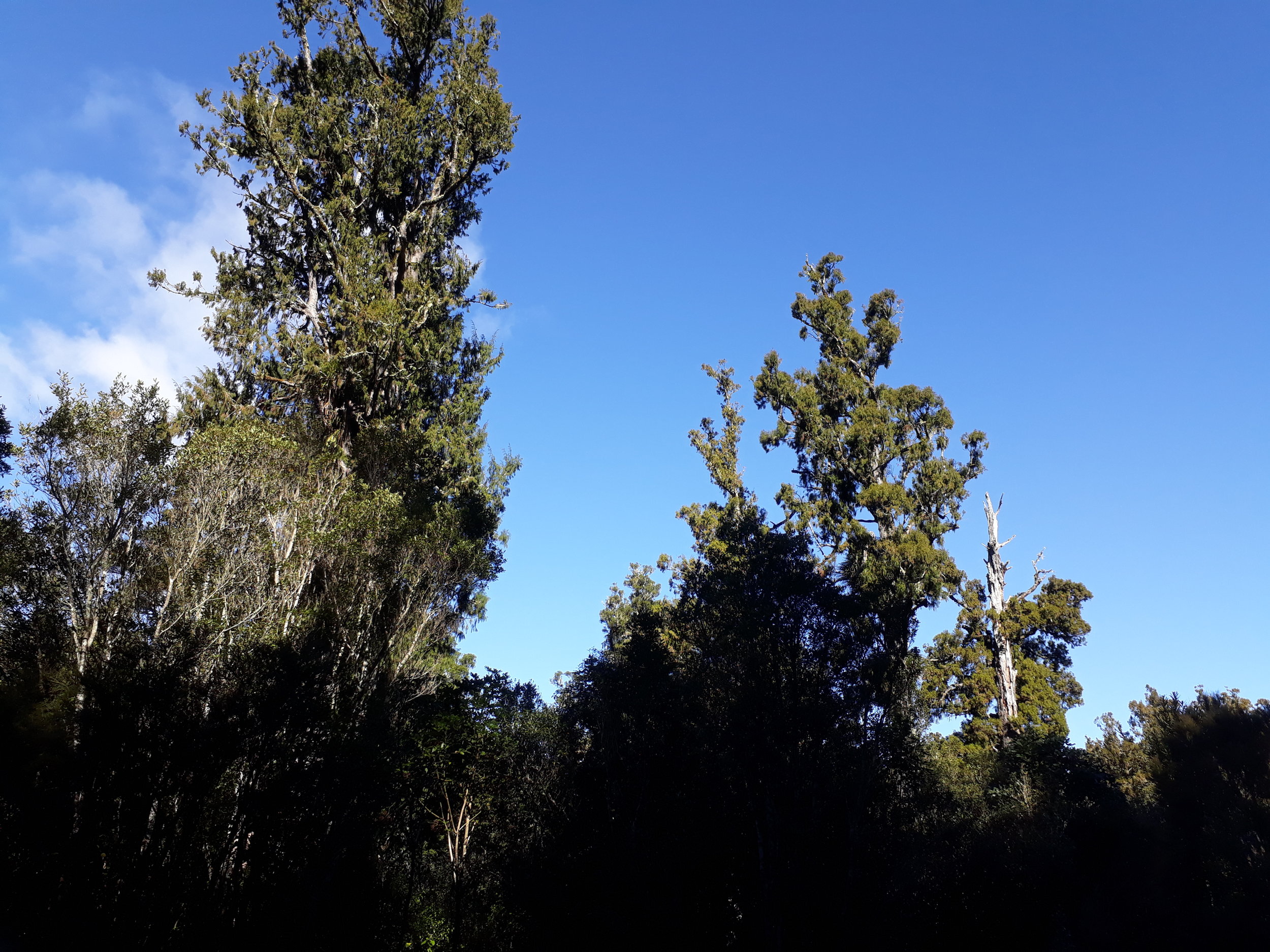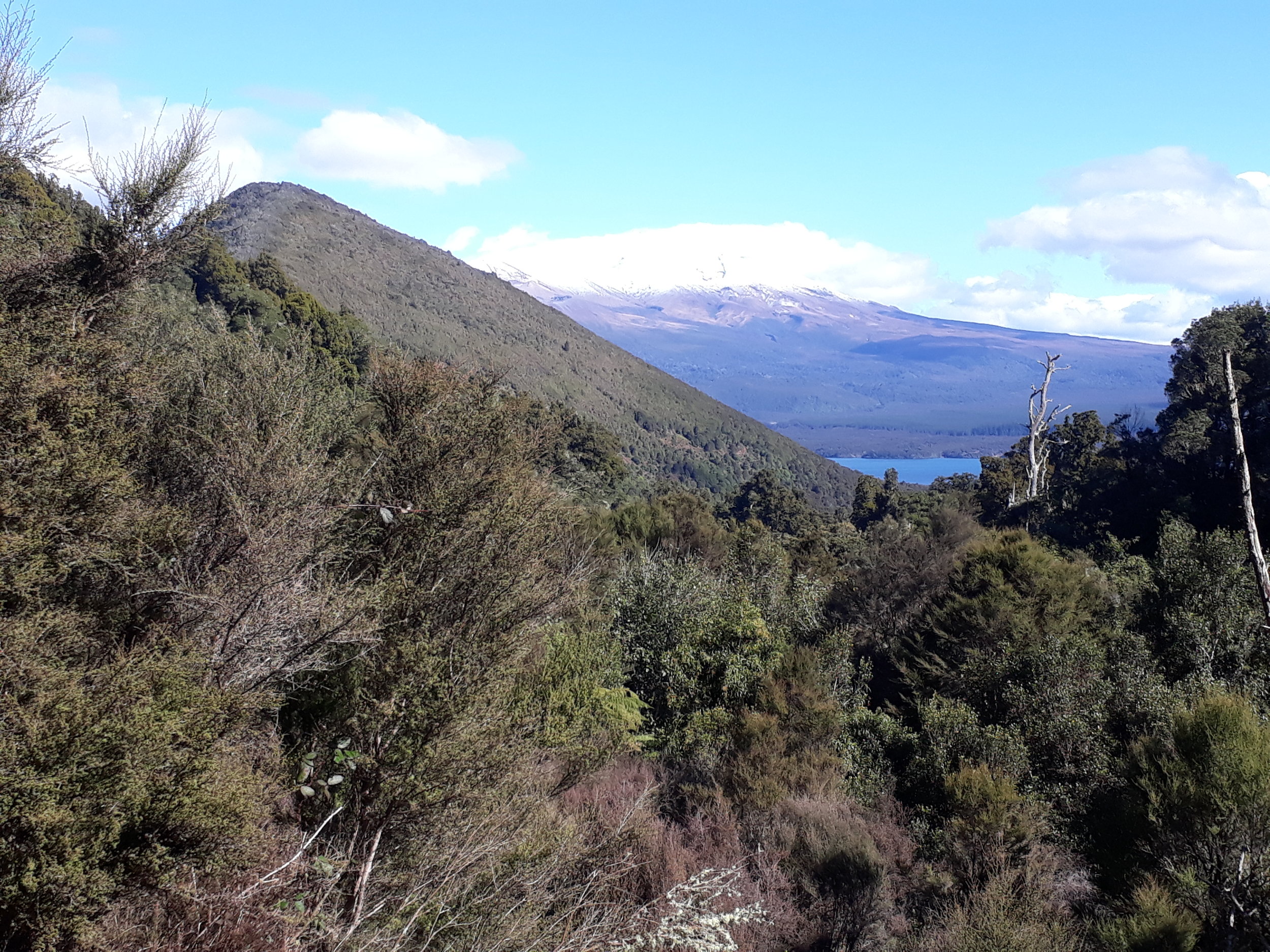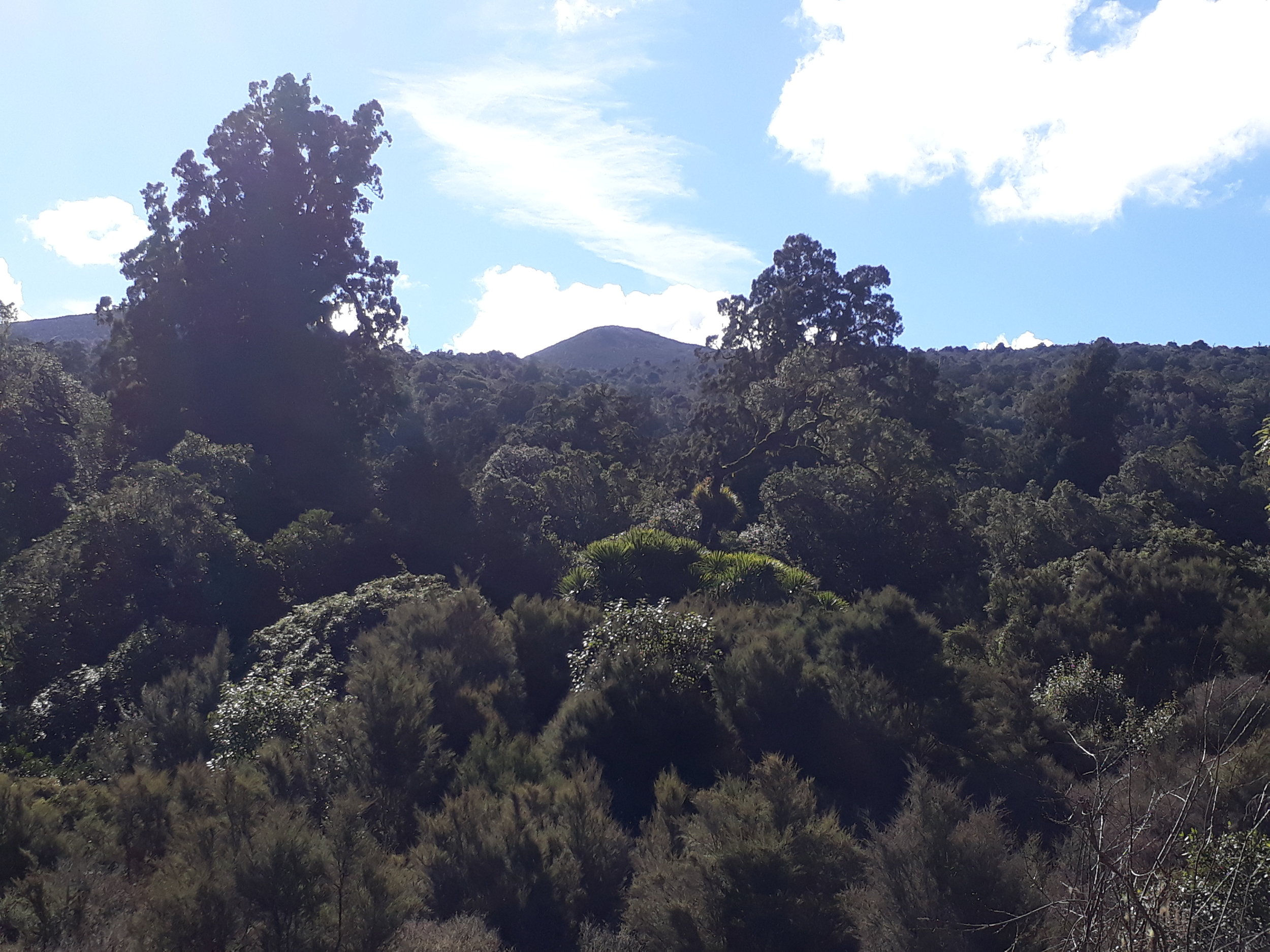Rotopounamu - Pihanga has been identified as a representative site in terms of indigenous biodiversity and cultural values. Its geography and access lend it for a successful integrated pest management plan. The approach targets the entire ecosystem focusing on a multitude of threats, using different control techniques and community involvement. Pests controlled include possums, pigs, stoats, weasels, ferrets, rats and cats. This technique offers the current native populations of fauna and flora to regenerate and become self-sustaining. The Rotopounamu Track in this area circles a beautiful lake surrounded by native forest and is a special favourite of tourists, tree lovers, birdwatchers, and families.
Of some concern is the changing focus of the visitors to the Tongariro National Park and the Rotopounamu area in particular. Visitor numbers are increasing and their priorities in the area are increasingly skiing at Ruapehu and thrill-seeking with the Tongariro Crossing as a 'must do' for young overseas visitors. The Rotopounamu track gets busy if the weather prohibits these activities and the access road shows increasing signs of dumped rubbish and food-scraps. The Te Ponanga Saddle road has become a favourite with rats, stoats and weasels as proven by the predator catch rates in this area. Volunteers work hard to reduce these threats to the native bird-life in the area. People these days seem to have less time for tramping, bird-watching and -counting, let alone rat-catching in the bush. Prove us wrong! A keen group continues to fight for a predator-free area. If you want to join this group become a volunteer!
Predator Eradication
Kill traps and other eradication techniques are continuously evolving and being updated for stoats, weasels, ferrets rats, possums and feral cats. This allows native bird species to thrive and breed in the forest.
The project was started in 2003-4 over 300 hectares around the lake, initially only seasonally. This was extended in 2009 and 2014 and is now being managed and extended continuously. The Department of Conservation and Project Tongariro are taking a leading role, but the real success of this project lies within the local community, helping with baiting, trap-clearing, monitoring, raising awareness and fund-raising. Anyone can ‘adopt a hectare’ and become part of the most significant forest restoration project in the Taupo catchment.
Why are we doing this?
This project is leading the way in the Tongariro - Taupo area with its predator-control. The ambitious goal of a predator-free New Zealand in 2050 is gaining credibility with the success of this and other projects in the Central North Island area.
History
1887 - Te Heuheu Tukino gifts Tongariro and Ruapehu to the Government as a National park, for the use of both Natives and Europeans.
North Island Robin - photo Iris Broekma
1984 - The Tongariro National History Society is established to promote a wider understanding of the natural processes, flora and fauna, geology, weather, natural and human history of Tongariro National Park.
1990 - Tongariro becomes a World Heritage site.
1993 - Tongariro becomes the first property to be inscribed on the World Heritage List under the revised criteria describing cultural landscapes. The mountains at the heart of the park have cultural and religious significance for the Maori people and symbolize the spiritual links between this community and its environment.
2003 - Rotopounamu - Pihanga Restoration Project set up as a partnership between Project Tongariro (The new name for Tongariro Natural Heritage Society - TNHS) and the Department of Conservation (DOC) with growing support from a large number of organisations. (Rotopounamu = Greenstone Lake).
Bat Research at Rotopounamu
2005 - Collection of bird, predator, bat and Weta data, hand-pollination of the wood rose (Dactylantus) and trapping with a small collection of mustelid traps. Adopt a hectare fundraising campaign initiated for the project.
2007 – Rodent and Mustelid populations down to zero as a result of trapping and a 1080 drop by the Animal Health Board.
2008 - Baiting stations with Diatrec over 350 Ha with 572 bait stations. Despite this rat relative abundance (Percentage of tracking tunnels with traces) went from 16% to 58% (good season of natural feed) and then down to 26%. Mice abundance went to 70%!
2009 - Five minute bird counts showed increase in most and decrease in only some bird species. Counts of Weta, Bats, Dactylanthus and Whit Mistletoe seemed stable.
2010 – Rat density index started at 69%, mouse density at 49%. New bait of PestOff 50D used by contractors rebaited every fortnight. Rat densities dropped to 5.7%, mice to 30%, and later in the year to 1.4 and 2.9 respectively. 50 DOC 200 traps set around the lake.
Piwakawaka on nest - photo Sacha Brocks
2011 – 1150 bait stations and 50 DOC 200 traps closed for the season at end of March. Rat and Mouse numbers still below 5 % at that time. 476 5-minute bird counts were completed with analysis of 13 bird species. All species increased in numbers except Falcon and Silvereye. Great success for the baiting and trapping efforts due to good control of rat and possum numbers. Good numbers spotted for Rifleman, North Island Robin, Kaka, Kereru and Falcon.
2012 – 60 Hectares at Rotopounamu are now adopted. Rat numbers on the increase to 19%. Bait stations paused over winter. 248 5-minute bird counts were undertaken showing significant increases in Rifleman, Silvereye, Whitehead and Kakariki. Possum counts were low enough (2%) to call off the possum baiting. 19 stoats and 79 rats were trapped around the lake. Reduction in staff numbers results in more reliance on volunteers. In September 150 predator traps set up in one day with volunteers. Stoats, Weasels and Ferrets will be controlled over 1200 hectares. Weka and Brown Teal could possibly be re-introduced as a result.
Rotopounamu - Monthly catch records 2013 - 2020
2014 – Project Tongariro 30 year! Genesis Energy Whio Hardening Facility opens at the Tongariro National Trout Centre.
2016 - Large reduction in catches of rats, stoats and weasels as a result of 1080 drop in 2015. Excellent breeding season for the birds in the area. Prime Minister announces Predator Free New Zealand 2050! The use of 1080 for the eradication of predators and the survival rate of native birds is under continuous discussion and research. This type is done in the Rotopounamu area as well as other areas on the basis of statistics like the ones above. Currently the adopted process seems to be the best available despite possible negative side-effects of poison use. An example of recent research is available here: https://predatorfreenz.org/kea-1080-benefits/?fbclid=IwAR1FKhBR-rZPHoac5J74u7TuKuKkBJjGzY7yzmoR0RrTPSEWxtd4EePtgtg
2018 - 55 more traps installed at the north side of Pihanga, including self-setting A24's to shield the area from the farm and the Tokaanu/Turoa area. 1080 drop with the latest improvements to minimise harm to non-target species and most successful eradication of predators.
















